Order Passeriformes Scientific name Chloris chloris Rank Species | Phylum Chordata Family Fringillidae Genus Chloris Higher classification Chloris | |
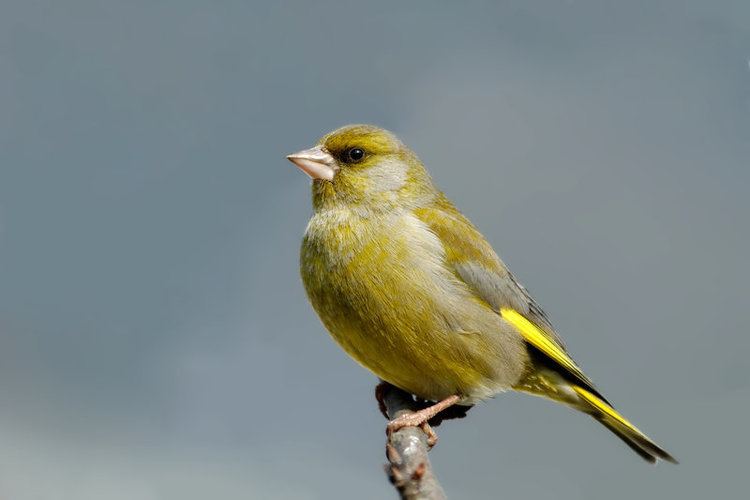 | ||
Similar Bird, European goldfinch, Common linnet, Eurasian siskin, Common chaffinch | ||
The European greenfinch, or just greenfinch (Chloris chloris) is a small passerine bird in the finch family Fringillidae.
Contents
This bird is widespread throughout Europe, north Africa and south west Asia. It is mainly resident, but some northernmost populations migrate further south. The greenfinch has also been introduced into both Australia and New Zealand. In Malta, it is considered a prestigious song bird, and it has been trapped for many years. It has been domesticated, and many Maltese people breed them.
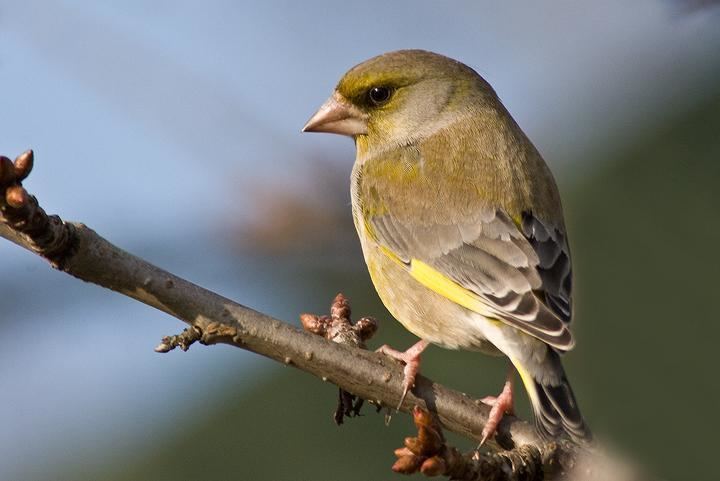
Taxonomy

The greenfich was described by Linnaeus in 1758 in the 10th edition of his Systema Naturae under the binomial name of Loxia chloris. The scientific name is from khloris, the Ancient Greek name for this bird, from khloros, "green".
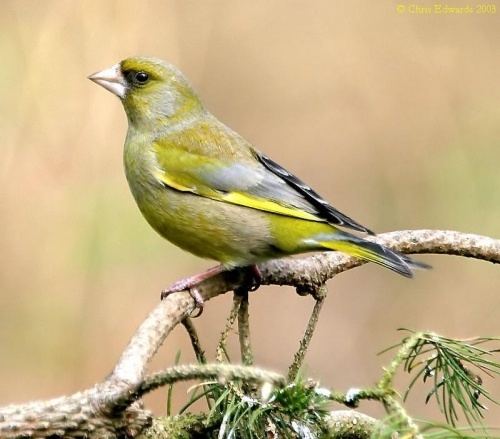
The finch family, Fringillidae, is divided into two subfamilies, the Carduelinae, containing around 28 genera with 141 species and the Fringillinae containing a single genus, Fringilla, with 3 species. The finch family are all seed-eaters with stout conical bills. They have similar skull morphologies, nine large primaries, twelve tail feathers and no crop. In all species the female bird builds the nest, incubates the eggs and broods the young. Fringilline finches raise their young almost entirely on arthropods while the cardueline finches raise their young on regurgitated seeds.
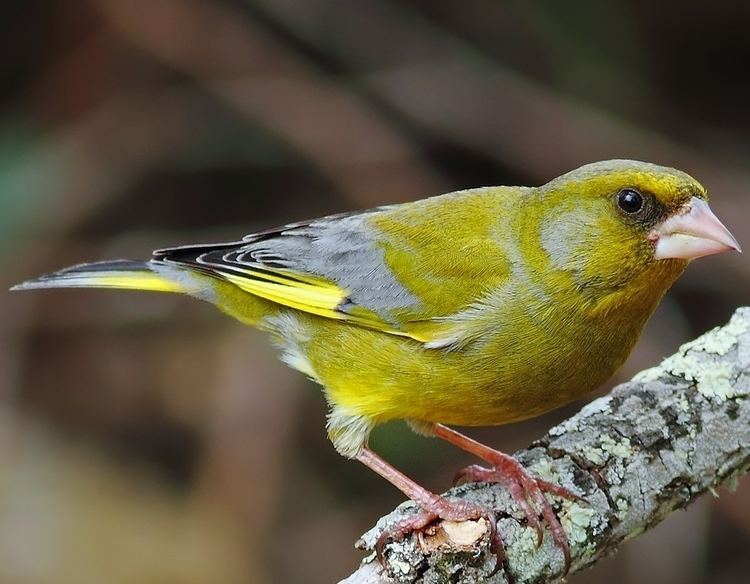
Phylogenetic analysis based on DNA sequence data indicated that the greenfinches were not closely related to other members of the Carduelis genus. They have therefore been placed in a separate genus Chloris.
There are ten recognised subspecies:

Description
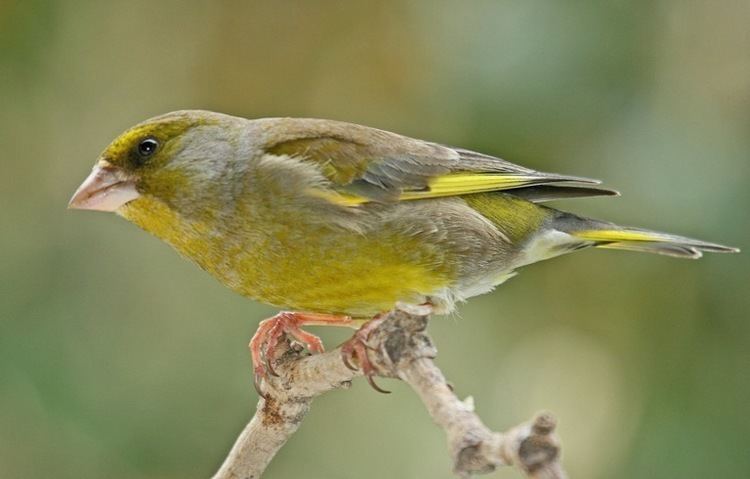
The greenfinch is 15 cm (5.9 in) long with a wing span of 24.5 to 27.5 cm (9.6 to 10.8 in). It is similar in size and shape to a house sparrow, but is mainly green, with yellow in the wings and tail. The female and young birds are duller and have brown tones on the back. The bill is thick and conical. The song contains a lot of trilling twitters interspersed with wheezes, and the male has a "butterfly" display flight.
Behaviour and ecology
Woodland edges, farmland hedges and gardens with relatively thick vegetation are favoured for breeding. It nests in trees or bushes, laying 3 to 6 Eggs.
This species can form large flocks outside the breeding season, sometimes mixing with other finches and buntings. They feed largely on seeds, but also take berries.
Reproduction
Breeding season occurs in spring, starting in the second half of March, until June, with fledging young in early July. Incubation lasts about 13-14 days, by the female. Male feeds her at the nest during this period. Chicks are covered with thick, long, greyish-white down at hatching. They are fed on insect larvae by both adults during the first days, and later, by frequent regurgitated yellowish past of seeds. They leave the nest about 13 days later but they are not able to fly. Usually, they fledge 16–18 days after hatching. This species produces two or three broods per year.
In Australasia the greenfinches breeding season is from October to March.
Predators and parasites
The protozoal parasite Trichomonas gallinae was known to infect pigeons and raptors but beginning in Britain in 2005, carcases of dead European greenfinches and common chaffinches were found to be infected with the parasite. The disease spread and in 2008 infected carcases were found in Norway, Sweden and Finland and a year later in Germany. The spread of the disease is believed to have been mediated by chaffinches as large numbers of the birds breed in northern Europe and winter in Britain. In Britain the number of infected carcases recovered each year declined after a peak in 2006. There was a reduction in the number of greenfinches from around 4.3 million to around 2.8 million but no significant decline in the overall number of chaffinches. A similar pattern occurred in Finland where, after the arrival of the disease in 2008, there was a reduction in the number of greenfinches but only a small change in the number of chaffinches.
